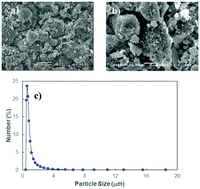Carbonated water droplets on a dusty hydrophobic surface
Abstract
Dust mitigation from surfaces remains essential, particularly for the efficient operation of energy harnessing devices. Although various dust removal methods have been introduced, the self-cleaning method is favorable because of the cost-effective cleaning process. Dust mitigation from surfaces by water droplets, mimicking nature, is fruitful because it involves low-cost operations. The dust removal rate from surfaces by rolling water droplets can be increased by creating bubbles inside the rolling droplets through which dust pinning on surfaces can be lowered and the droplet liquid infusion on dust surfaces can be enhanced. This study provides insight into bubble formation and dust mitigation in carbonated and distilled water droplets located on hydrophobic surfaces by examining bubble formation and dust distribution inside the water droplets. The behavior of bubbles inside the carbonated water droplet and emanating from the hydrophobic surface was recorded and analyzed by incorporating high-speed camera data. The influence of environmental dust particles on bubble formation was also assessed. Bubble velocity was formulated analytically and the findings are compared with those of the experimental values. Findings revealed that the bubble formation inside the carbonated droplet fluid had a significant effect on the transition of dust particles from the hydrophobic surface towards the droplet fluid. The volume concentration of dust particles in the carbonated water droplet was almost 1.5 to 2.5 times larger than that of the distilled water droplet. The dissolution of alkaline and alkaline earth metal compounds in the carbonated droplet fluid acted like nucleation centers for bubble formation; hence, the number of bubbles formed on the dusty hydrophobic surface was greater than that of the clean hydrophobic surface. Some bubbles attached at the dust particle surface contributed to dust mobility in the droplet fluid, which occurred particularly in the droplet bottom region. This enhanced the velocity of the dust particles transiting from the dusty hydrophobic surface to the droplet fluid interior by almost 1.5 times in the early period.



 Please wait while we load your content...
Please wait while we load your content...